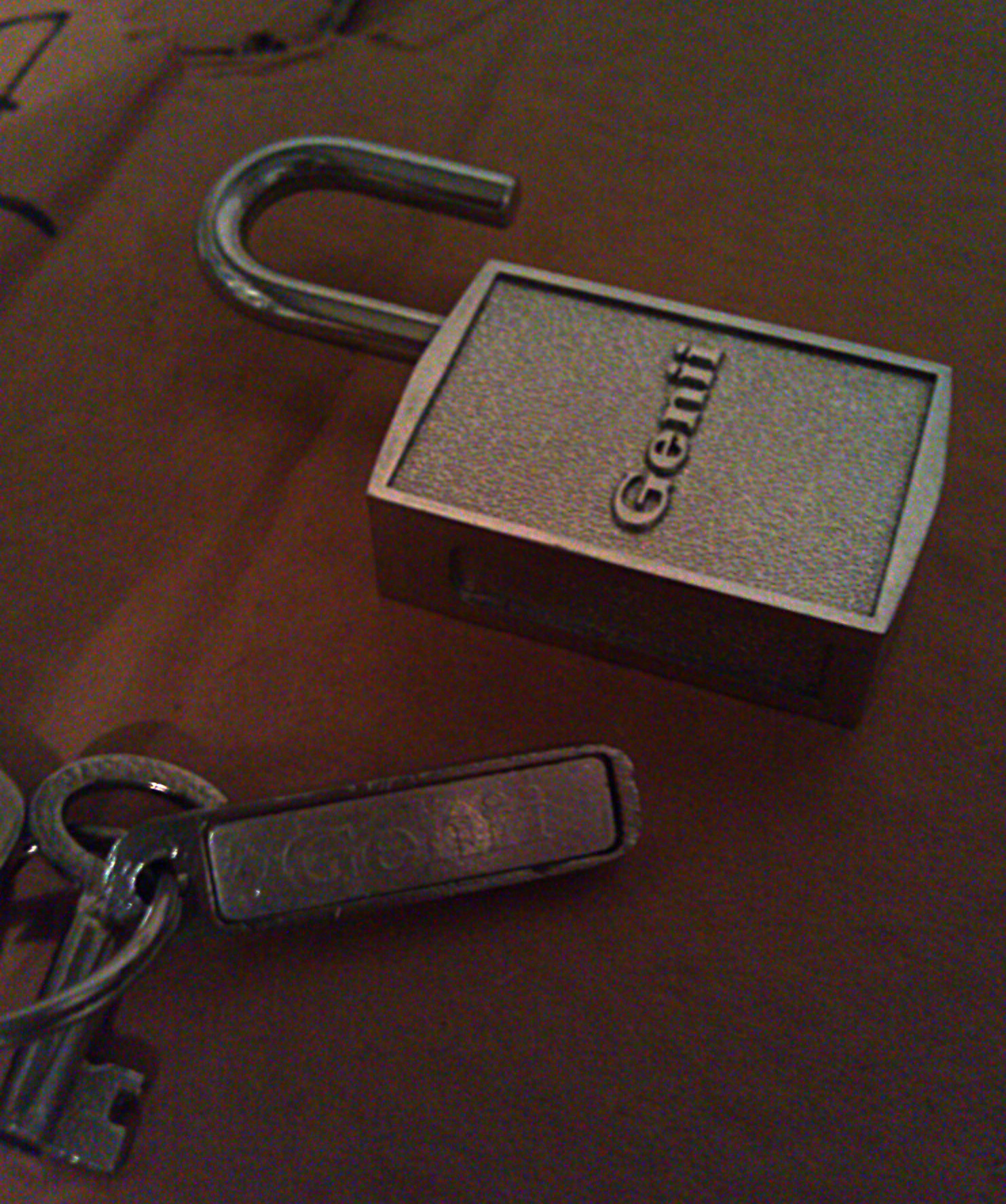Magnetic-coded lock on:
[Wikipedia]
[Google]
[Amazon]

 A magnetic keyed lock or magnetic-coded lock is a
A magnetic keyed lock or magnetic-coded lock is a
 A magnetic keyed lock or magnetic-coded lock is a
A magnetic keyed lock or magnetic-coded lock is a lock
Lock(s) may refer to:
Common meanings
*Lock and key, a mechanical device used to secure items of importance
*Lock (water navigation), a device for boats to transit between different levels of water, as in a canal
Arts and entertainment
* ''Lock ...
ing mechanism whereby the key utilizes magnet
A magnet is a material or object that produces a magnetic field. This magnetic field is invisible but is responsible for the most notable property of a magnet: a force that pulls on other ferromagnetic materials, such as iron, steel, nicke ...
s as part of the locking and unlocking mechanism. Magnetic-coded locks encompass knob locks, cylinder lock
The pin tumbler lock is a lock mechanism that uses pins of varying lengths to prevent the lock from opening without the correct key. Pin tumblers are most commonly employed in cylinder locks, but may also be found in tubular pin tumbler locks ( ...
s, lever locks, and deadbolt
A dead bolt, deadbolt or dead lock is a locking mechanism distinct from a spring bolt lock because a deadbolt can only be opened by a key or handle. The more common spring bolt lock uses a spring to hold the bolt in place, allowing retraction ...
locks as well as applications in other security devices.
Design
A magnetic key uses from one to many small magnets oriented so that the North / South Poles would equate to a combination to push or pull the lock's internal tumblers thus releasing the lock. This is a totally passive system requiring no electricity or electronics to activate or deactivate the mechanism. Using several magnets at differing polarity / orientations and different strengths can allow thousands of different combinations per key. Magnetic-coded technology utilizes multiple pairs of magnetic pins with opposing poles that are embedded inside keys and plugs. When a correctly matched key is inserted into the lock, not only are all the mechanical pins pushed into the correct positions, the magnetic pins are also driven to the appropriate level by the magnetic force inside the key. The magnetic pins are made with permanent magnets which means the magnets stay magnetized. The intensity of the magnet will not decay over time or be affected by other magnetic fields.Security
In order to open a magnetic-coded lock, three criteria must be met: correct teething of the key, magnetic pin locations and poles of the magnetic pins. If any of these three criteria are not satisfied, the lock stays inoperable and cannot be turned. Traditionallock picking
Lock picking is the practice of unlocking a lock by manipulating the components of the lock device without the original key.
Although lock-picking can be associated with criminal intent, it is an essential skill for the legitimate profess ...
is impossible due to the tumblers being magnetically operated instead of via a physical up and down action. Magnetic keys also cannot be reproduced by locksmiths by sight or other "human sensed" information.
Equation
: where : is the number of magnetic-coded lock key combinations, : is the number of conventional pin-tumbler lock combinations, : is the number of pairs of embedded magnets (multiple pairs can be embedded).Advantages
*Anti-picking: The embedded magnetic pins are not exposed to the key way, therefore, no lifting force can be applied to move the magnetic pins. Most standard forms oflock picking
Lock picking is the practice of unlocking a lock by manipulating the components of the lock device without the original key.
Although lock-picking can be associated with criminal intent, it is an essential skill for the legitimate profess ...
are therefore preventable. This does not mean the lock cannot be picked by something as simple as quickly moving a strong magnet around it while applying force to the mechanism.
*Anti-bumping: Lock bumping
Lock bumping is a lock picking technique for opening a pin tumbler lock using a specially crafted bump key, rapping key or 999 key. A bump key must correspond to the target lock in order to function correctly.
History
A US patent first appears i ...
transmits kinetic energy from the key to the drive pins, to split the bottom and top pins. The embedded magnetic technology has no physical contact points between key and magnetic pins, therefore no kinetic energy is transmitted.
*Key control (advantages): Due to the magnetic cylinder elements embedded in the keys, there is a high degree of key control. Unlawful key duplications are minimized by limited access to key blanks (locksmiths) and unique magnetic coding in the key that cannot easily be determined by inspecting the target lock.
*Cost effectiveness: Because the manufacturing process is based on the pin and tumbler platform, the cost of manufacturing is significantly reduced when compared to high security locks with comparable security features. These high security locks often utilize new locking mechanisms which increase the cost of manufacturing.
Disadvantages
*Manufacturing complexity: A special tool set and procedures have to be developed to accomplish the task of embedding the magnets inside both the keys and the locks. *Key control (disadvantages): Having a limited supply of blanks can make legitimate duplication of keys — for example, after one is lost — more difficult and more expensive.History
The magnetic-coded lock was invented by an engineer in Nanchang, China. There have been several Chinese patents taken out on this technology.See also
*Physical security
Physical security describes security measures that are designed to deny unauthorized access to facilities, equipment and resources and to protect personnel and property from damage or harm (such as espionage, theft, or terrorist attacks). Physica ...
References
{{Locksmithing Locks (security device) Locksmithing Types of magnets de:Schloss_(Technik)#Magnetschloss